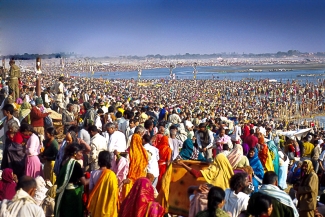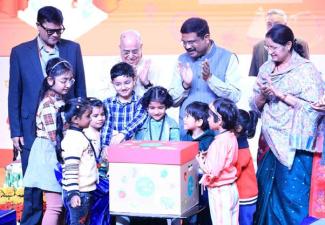
The Intergovernmental Committee for the Safeguarding of the Intangible Cultural Heritage under UNESCO has inscribed ´KumbhMela´ on the Representative List of Intangible Cultural Heritage of Humanity during its 12th session held at Jeju, South Korea from 4-9 December 2017. This inscription is the third in two years following the inscriptions of ´Yoga´ and ´Nouroz´ on 1stDecember 2016.
The inscription of ´KumbhMela´ was recommended by the expert body which examines in detail the nominations submitted by Member States. The Committee observed that ´KumbhMela´ is the largest peaceful congregation of pilgrims on earth. The festival, held in Allahabad, Haridwar, Ujjain and Nasik, represents a syncretic set of rituals related to worship in India. It is a social ritual and festive event closely linked to the community´s perception of its own history and memory. The element is compatible with existing international human rights instruments since people from all walks of life, without any discrimination participate in the festival with equal fervor. As a religious festival, the tolerance and inclusiveness that KumbhMela demonstrates are especially valuable for the contemporary world.
The Committee also took note of the fact that knowledge and skills related to ´KumbhMela´ are transmitted through the Guru-Shishyaparampara (teacher-student relationship) by way of saints and sadhus teaching their disciples about traditional rituals and chants. This would ensure the continuity and viability of this festival in perpetuity.
The legend around KumbhMela includes the battle between Gods and Demons over a pot of Amrit (Nectar of immortality). In the ensuing battle between Devas and Asuras, a few drops of this nectar fell in Haridwar, Allahabad, Ujjain and Nasik and since then KumbhMela has been held in these places.
In 2003, the UNESCO General Conference adopted the Convention for the Safeguarding of the Intangible Heritage as an international treaty acknowledging that cultural heritage is more than tangible places, monuments and objects; it also encompasses traditions and living expressions. Intangible cultural heritage means the practices, representations, expressions, knowledge, skills – as well as the instruments, objects, artefacts and cultural spaces associated with them that communities, groups and, in some cases, individuals recognize as a part of their cultural heritage. This intangible cultural heritage is constantly recreated by communities and groups in response to their environment, their interaction with nature and their history, and provides them with a sense of identity and continuity, thus promoting respect for cultural diversity and human creativity. It is not valued because it is unique but rather because it is relevant for the community practicing it. Furthermore, its importance is not in the cultural manifestation itself, but in the wealth of knowledge, know-how and skills that are transmitted from one generation to the next.












